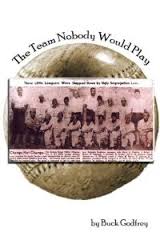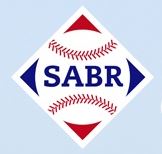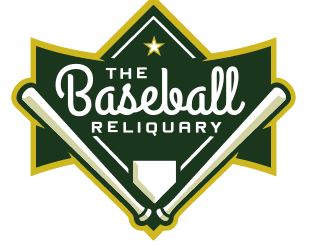 On this day (August 16) in 2002, a group of Little Leaguers – all pushing 60-years-old – was honored at the Little League World Series. They were a group that, as 11- and 12-year-olds, made the trip to Williamsport as a team, but never had the opportunity to play a game. Still, this team – the 1955 Cannon Street YMCA All Stars (Charleston, South Carolina) – has been recognized for its contributions racial understanding and equality on and off the field.
On this day (August 16) in 2002, a group of Little Leaguers – all pushing 60-years-old – was honored at the Little League World Series. They were a group that, as 11- and 12-year-olds, made the trip to Williamsport as a team, but never had the opportunity to play a game. Still, this team – the 1955 Cannon Street YMCA All Stars (Charleston, South Carolina) – has been recognized for its contributions racial understanding and equality on and off the field.
Jackie Robinson may have broken Major League Baseball’s “color line” in 1947, but in 1955, there was still plenty of controversy surrounding integration – as evidenced by the events surrounding the 1955 Little League World Series.
In the summer of 1955, there were more than 62 chartered Little League programs in South Carolina. All but one of those leagues – the Cannon Street YMCA Little League in Charleston – was made up entirely of white players. As the season progressed, the Cannon Street League played its full schedule and then selected a team to represent the league in the tournament leading up to the Little League World Series.
Cannon Street’s All Star squad advanced in the tournament without losing a game – not because they overpowered the opposition, but because all of the teams representing South Carolina’s “white” Little League simply refused to play them. Cannon Street won their city and state championship tournaments by forfeit. Then, when championship teams from the seven other Southern Region states refused to play the Cannon Street team, Little League declared the squad the regional champion as well. (The “white” leagues eventually went so far as to leave Little League and form a new association, Dixie Baseball for Boys.)
Little League, to its credit, held firm to its non-discrimination policy, rejected the South Carolina affiliate’s request for an all-white tournament and ruled that if a team refused to play against a duly franchised Little League, that team would not be allowed to participate in the Little League tournament. That left only one team standing in North Carolina – the Cannon Street squad. The next step should have been competing in the Little League Series – but here’s where rules overruled common sense. Little League officials also held firm on a rule prohibiting teams from playing for the World Series title after advancing by forfeits.
The organization did, however, invite the Cannon Street team to Williamsport as guests. The story has it that the team made the 750-mile trip to Williamsport in an old school bus that broke down a few times and even caught fire along the way. Once in Williamsport, the team stayed in the dorms with other teams and took part in the festivities surrounding the World Series (even on-field warm-ups) – but were not allowed to play a game.
Notably, after their on-field warm-ups, the crowd in the stands (estimated at about 5,000) began a stadium-rattling chant of “Let them play! Let them play!” (A shining moment for a crowd of Little League families.) Clearly, the team may have not won a game in Williamsport, but they won quite a few hearts. And, over the years, members of the team lived their lives and told their story with dignity – opening quite a few eyes (and hearts) as well.
Forty-seven-years later, members of that team were honored at the opening ceremonies of the 2002 Little League World Series. At that ceremony, Little League president and CEO Stephen Keener told the crowd and the team, “There is no way to right the wrong perpetrated on the boys of the Cannon Street YMCA Little League team, just as there is no way to right the wrongs perpetrated throughout history on people because of their skin color. Little League will be honored to have the Cannon Street team with us as our special guests.” A big day for Little League.
And there have been other accolades.
In 2006, the team was inducted into the Charleston Baseball Hall of Fame and, in 2012, the city of Charleston unveiled an historical marker honoring the players for their accomplishments and contributions on and off the field
Earlier this year, U.S. Senator Tim Scott (R-SC), read the following tribute into the Congressional Record:
In the heart of Charleston, SC, lies Cannon Street; it’s a modest street spanning just a few city blocks. However, within its history lies the story of what Dr. Creighton Hale, the former CEO of little league baseball, called “the most significant amateur team in baseball history.”
In 1955, the area surrounding this street was one of economic blight and social unease. In an effort to keep kids out of trouble and teach skills that only team sports can provide, the local YMCA organized four little league teams for the neighborhood kids. The Cannon Street YMCA All-Stars consisted of seventeen players: John Bailey, Charles Bradley, Vermont Brown, William Godfrey, Vernon Grey, Allen Jackson, Carl Johnson, John Mack, Leroy Major, David Middleton, Arthur Peoples, John Rivers, Norman Robinson, Maurice Singleton, Leroy Carter, George Gregory, and Augustus Holt. They were coached and founded by: Lee J. Bennett, Walter Burke, Rufus Dilligard, A.O. Graham, Robert Morrison, R.H. Penn, and Benjamin Singleton. The team would advance to the Charleston City Little League playoff games, but would never be given the opportunity to earn a spot in the Little League World Series. It was not because they were unworthy players or because they could not afford to go. The color of their skin stifled the dreams of these twelve-year-old boys.
The Charleston playoff games were boycotted in 1955 to preserve racial segregation. Because teams again refused to play against them, the Cannon Street All-Stars advanced past the state and regional playoffs. The National Little League invited the All-Stars to the Little League World Series as special guests; they could not compete for the title because technically they hadn’t played their way to the championships. They returned to Charleston, dismayed and disappointed.
As children, they embodied the very characteristics that organized sports aim to impart–teamwork, courage and respect. As adults they have worked in productive and valuable careers such as architecture, law enforcement and education. As they have grown older, they are now volunteers in their communities–giving back, yet again. While they never had the opportunity to compete, their story has demonstrated where we have come from as a nation.
Last month members of my staff had the opportunity to meet several of the original Cannon Street Little Leaguers who traveled to Washington, DC to be recognized at Nationals Stadium before the Nationals-Phillies game. Their story remains powerful more than 65 years later, and I know my staff will never forget having the opportunity to meet them.
Today, the neighborhood that encompasses Cannon Street has developed into an integral part of the Charleston education and science community. It is home to a number of colleges and universities and a world-class research hospital. The boys of the Cannon Street Little League Team are men who through their careers and service to the community have become assets to their neighborhoods. In spite of the adversity they encountered and the challenges they confronted, these young people illustrated to the world the absurdity of segregation and the hatred inherent in racism.
In the 55 years since they were excluded from competing to earn a spot at the Little League World Series in their own right, America has matured. I would like to believe that a handful of twelve-year-olds contributed to our maturity.
It is with great admiration that I share their story and my respect for these men with you, my colleagues.
You can learn more about the Cannon Street YMCA All Stars in William Godfrey’s book, “The Team Nobody Would Play,” in the film “The Cannon Street Boys,” in Margo Theis Raven’s children’s book “Let Them Play” and in Carole Boston Weatherford children’s book “Champions on the Bench.”







During a birthday party for one of the “original league’s” current players I was privileged to meet Mr. Vermont Brown. As a native to Williamsport, PA I thought I knew so much about Little League’s history. I had been told that there was an “instance of segregation in the past”. Very little elaboration was ever shared. Then I had attended a Birthday Party, at the ‘field’, and noticed a gentleman and his wife taking pictures and seemed very interested in the empty field. I introduced myself and asked if they would like to have their picture taken together. I proceeded to ask if they were visiting them as I thought that they may not be aware of the newly renovated Little League Museum. Here I was stepping away from a friends party to help strangers but I was so impressed on how well mannered this couple was, then came the surprise. I was introduced to what I now consider the 1955 world champions Pitcher. He told me of the great times the team had and how proud they were that year. It was remarkable that this man who was subjected to an intolerable segregation did not elaborate on the negative aspect of what his team went through but only told me where to be able to read more. I was so proud! This man was a good man, a positive man and represented his team in such a positive way. As I became inspired I mentioned if he were interested in pitching from the mound, I understood to that day he never had, I saw a mans face change into a smile of a young boy. (Maybe I enjoyed the day as much as my new friend.) He was kind enough to sign a baseball I had got given as a gift to my friend. What I live with each day is that it is very important to remember even our darkest times but celebrate that which deserves.